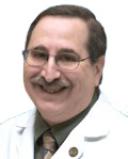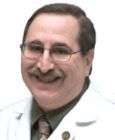Psychiatry
The Highs and Lows of Psychedelics
Caution regarding the hype surrounding psychedelic medications.
Posted November 8, 2022 Reviewed by Abigail Fagan
Key points
- High quality research studies are necessary to define potential therapeutic uses of psychedelics.
- Unrealistic expectations of psychedelic therapy may lead to an excessively negative overreaction when these expectations are not met.
- Wellness spas may start offering psychedelic therapies for off-label treatment of various disorders. This practice may have harmful consequences.
Eugene Rubin MD, PhD and Charles Zorumski MD wrote this column.
We have posted previously about some of the current research into potential therapeutic uses for psychedelic drugs. For example, psilocybin, when coupled with psychotherapy, may be helpful in treating anxiety disorders, depression, and substance use disorders. Importantly, only two doses of this medication may lead to long-lasting benefits. Such results have contributed to an aura of excitement surrounding the potential of these medications in treating psychiatric disorders. However, two commentaries recently published in JAMA Psychiatry express important concerns regarding psychedelic therapeutics.
David Yaden, James Potash, and Roland Griffiths warn that there is a “bubble” of enthusiasm about psychedelics — a bubble that could soon burst. These authors are members of the Department of Psychiatry and Behavioral Sciences at Johns Hopkins University where important studies regarding potential therapeutic uses of psychedelics are taking place. They refer to a concept called the Hype Cycle in which enthusiasm for a technology leads to inflated expectations. When these expectations are not met, the bubble bursts, resulting in a negative overreaction about the technology. Gradually, more realistic assessments of the evidence occur and scientific productivity resumes. This return to productive research assumes that the crash did not lead to the elimination of the ability for future research. This is what happened in the 1960s when negative press about psychedelics led to a government crackdown on research regarding their therapeutic potential. These authors believe that current psychedelic research is “cresting this peak” of hype and will eventually crash. Such a pattern could again interfere with developing the important therapeutic potential of these agents.
In a separate commentary, Anna Wexler and Dominic Sisti from the University of Pennsylvania discuss concerns about the likely growth of brain wellness spas offering psychedelic treatments. These authors point out the increasing number of spas that advertise off-label uses of psychiatric drugs and medical devices for various conditions. For example, they mention clinics that offer off-label uses of transcranial magnetic stimulation, neurotherapies such as neurofeedback, and ketamine. They note the developing multi-billion dollar market for psychedelics and are concerned about the potential harm that may occur in psychedelic wellness spas. Therapeutic administration of psychedelics will require special training, and it is possible that those administering these drugs in wellness spas may lack such training and important regulatory oversight. In addition, these clinics likely will administer these drugs to treat conditions for which credible evidence for efficacy is lacking. The dosing practices in spas also may not adhere to therapeutic guidelines. Patients may be harmed. Such harm, in addition to being dangerous to the individual, will have a negative influence on the public perception of psychedelic therapeutics and on the ability to conduct much needed clinical and basic science research on these agents.
The therapeutic potential of psychedelics is apparent and potentially important. However, psychedelics are unlikely to be panaceas or even wonder drugs, and it is important to minimize unrealistic expectations. Too much hype coupled with negative outcomes including misuse of these agents could interfere with important ongoing clinical research. Hopefully, federal and other funding agencies will realize the importance of this work and increase funding for new treatment development broadly, an area that is of major need in psychiatry.
References
Yaden, D.B., Potash, J.B., & Griffiths, R.R. (2022 Oct 1). Preparing for the bursting of the psychedelic hype bubble. JAMA Psychiatry. 79(10):943-944. doi: 10.1001/jamapsychiatry.2022.2546.
Wexler, A., & Sisti, D. (2022 Aug 1). Brain wellness "spas" - anticipating the off-label promotion of psychedelics. JAMA Psychiatry. 79(8):748-749. doi: 10.1001/jamapsychiatry.2022.1619.


